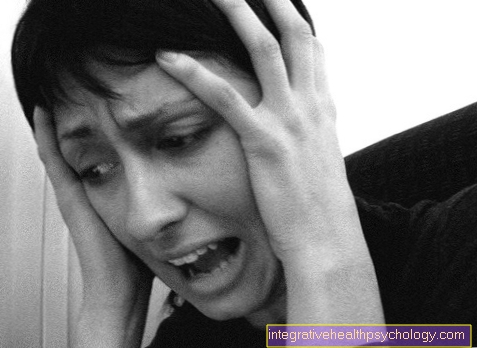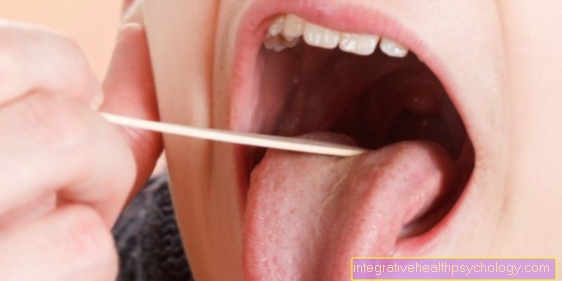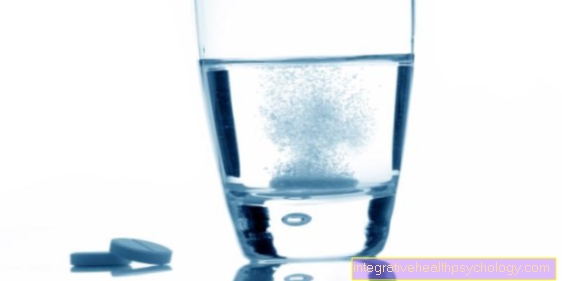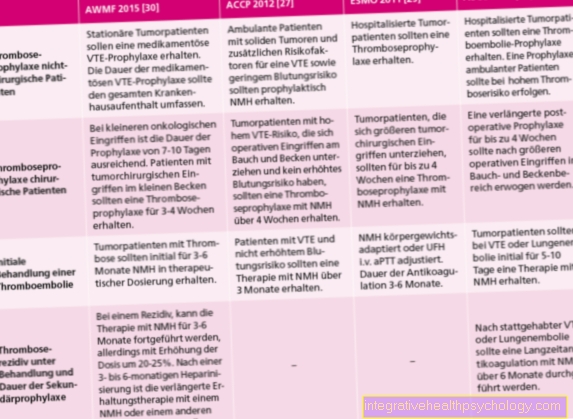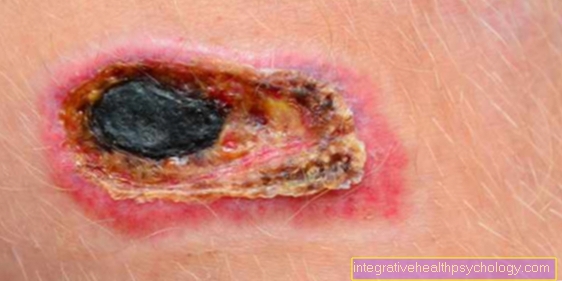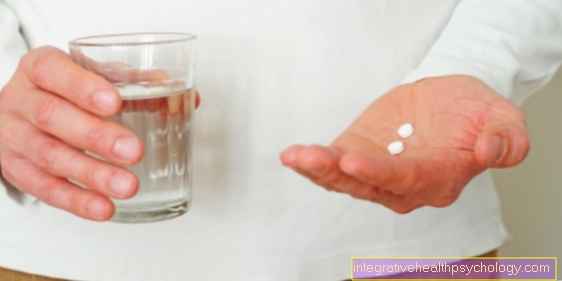Feverish dream
introduction
A feverish dream is an intense dream experience that can be remembered as part of a febrile illness. It is therefore a rememberable event in sleep that is related to the existing temperature increase. The fever dream can have both positive and negative content and be coherent in its subject matter as well as completely meaningless. For the definition it is only important that the dream was experienced within a fever phase. Subjectively, however, those affected often perceive feverish dreams as stressful or confusing.

causes
The basic mechanism for the development of feverish dreams is the combination of an increased need for sleep and the patient's increased body functions. Anyone who has ever suffered from typical flu knows that the body needs a lot of rest and sleep to recover. However, it is not uncommon for pathogens to cause such massive inflammatory and defense reactions in the body that the metabolism and blood circulation are increased as a result. The body temperature is also increased to kill the pathogens. In purely figurative terms, the body functions run at full speed in order to render the pathogens harmless.
Now it can be that the areas in the brain that are responsible for sleep are irritated by the increased metabolic functions. Normally the body regulates all functions during sleep. If there is an imbalance between body functions such as the pulse or body temperature and the activity of brain areas, this can lead to incorrect perceptions. Feverish dreams are very intense dreams that are perceived as "real". This impression arises mainly because the body does not come to rest properly during sleep.
What happens if you have a fever?
A feverish dream usually only occurs when there is a significant increase in body temperature and thus tends to indicate a more serious course of the disease. If the body temperature rises significantly, the heartbeat rate is increased reflexively. In this way, the body ensures that all organs in the body are adequately supplied with nutrients and oxygen despite the stressful "illness" situation. At the same time, this signals to the body that it is in an active performance phase. If the person affected is weakened by their illness and understandably tries to sleep, it is possible that the brain areas responsible for sleep are irritated by the increased metabolism.
In addition, the affected person often only reaches a dream-like stage because he is too stressed by the disease. As a result, the subconscious can send disordered signals and lead to so-called feverish dreams. At the peak of the fever curve, the discrepancy between the need for rest and physical exertion is greatest, so that the probability of occurrence is highest here. Unconscious thoughts mix with memories and then express themselves to the person concerned as a feverish dream.
Symptoms
The simplest symptom of a feverish dream is the fever itself. It depends entirely on the person concerned and his or her initial state, from which temperature increase it can lead to the feverish dream. Theoretically, doctors speak of fever at temperatures above 38 ° C. If the person concerned or relatives measures a significantly increased body temperature after a suspected febrile dream, this is a clear indication.
However, if you don't have a thermometer at home, you can see unspecific symptoms as an indication of a feverish dream. The basic requirement in almost all cases is a clear feeling of illness. The associated increased temperature is often expressed in the feeling of "burning eyes" and "glowing cheeks". In addition, the bed linen is not infrequently sweaty when you wake up. However, these are purely subjective observations that do not always have to be based on a feverish dream. Often it is really the relatives who can observe a feverish dream in the person concerned. Finding it in yourself is more of a guess, which is often based on a feeling of unrefreshing sleep or wild dreams. In any case, a clinical thermometer should be used to monitor the progress of the disease if it occurs repeatedly.
You might also be interested in this topic: Fever, dizziness and headache
Duration
The duration of a feverish dream can vary a lot, but should not last longer than a few hours. As a rule, these are rather short phases of around half an hour, which are associated with the peak of the body temperature during the fever. It is not uncommon for feverish dreams to repeat themselves when the body temperature rises again. However, it is important that the duration should be limited to the sleep phase. Any persistent confusion or distorted perception should be assessed by a doctor, since in such a case it is more the result of the increase in temperature. The associated loss of fluid can also lead to states of confusion.
Feverish dream in the child
Fever dreams are not uncommon in children. Children around the first year of life up to kindergarten age are particularly sensitive to strong temperature fluctuations, which is reflected in so-called febrile convulsions in addition to feverish dreams. The fever dreams, however, are to be regarded as uncomplicated.
At the beginning of an infection, parents often notice restless sleep in their child and increased sweating at night. Typical for feverish dreams are the sounds made by the child during sleep. From a quiet whimper to a light babble or crying, anything is possible. Objectively speaking, it helps to measure the temperature rectally (in the buttocks) with a clinical thermometer in order to estimate the likelihood of a feverish dream.
If the temperature is permanently significantly increased and the child is increasingly weakened, anti-fever measures should be taken so that the child has enough time for a restful sleep. If they occur once or if they only have very short feverish dreams, these should be tolerated. The increased body temperature helps the body's defenses to kill the pathogens that cause the disease.
Also read:
- How can you measure a fever?
- Fever in the toddler
Are fever dreams hallucinations?
Hallucinations are perceptions that are only perceived as "real" by the person affected. So other people cannot relate to these perceptions. You can express yourself in pictures as well as in sounds or in terms of taste.
In the case of a feverish dream, the person concerned usually experiences a situation that he perceives as "real" at the moment of the dream. However, when most of those affected wake up, they will immediately notice that it was a dream. A distinguishing feature for outsiders should be that a feverish dream in the person affected can take on characteristics from restless sleep to nightmares, but an awake and feverish person can clearly distance himself from his dream in retrospect. He can do this at the latest when his temperature has returned to normal.
What can you do about feverish dreams?
You only have to do something about feverish dreams if the fever leads to significant impairments. Otherwise, feverish dreams do not require any treatment, as they will go away on their own as the fever subsides. If the illness is over, no more feverish dreams are to be expected. Since the fever is the cause of the confused dreams, the key to therapy lies in lowering the temperature. In most cases, simple measures are sufficient, such as bed linen adapted to the body temperature or adequate fluid intake. Only in rare cases do feverish dreams require drug therapy, which is then used prophylactically. To this end, the selected drugs are usually used regularly during the acute phase of the illness or before the expected peak of the fever curve. However, they should not be used as a permanent measure.
also read: How can you lower a fever?

